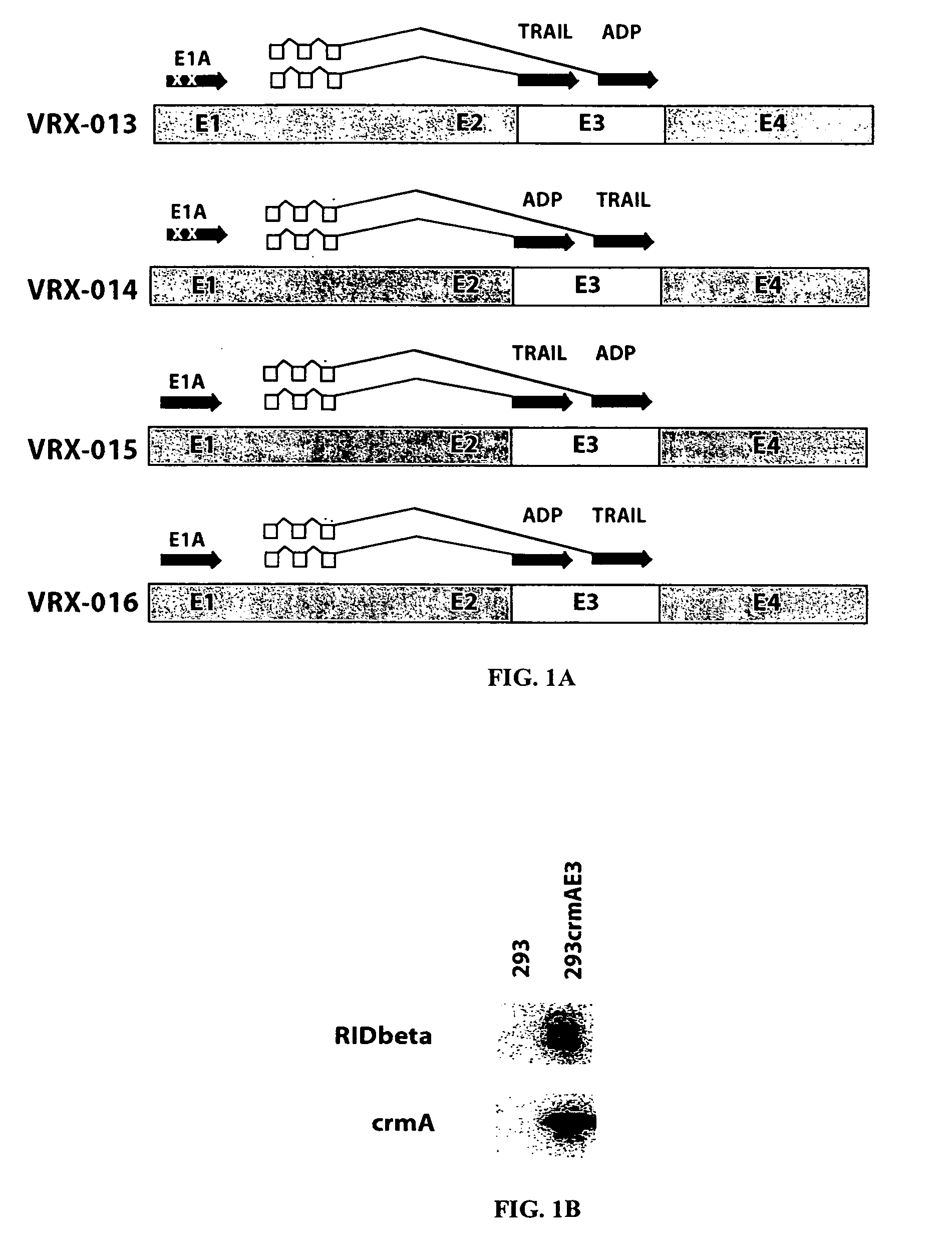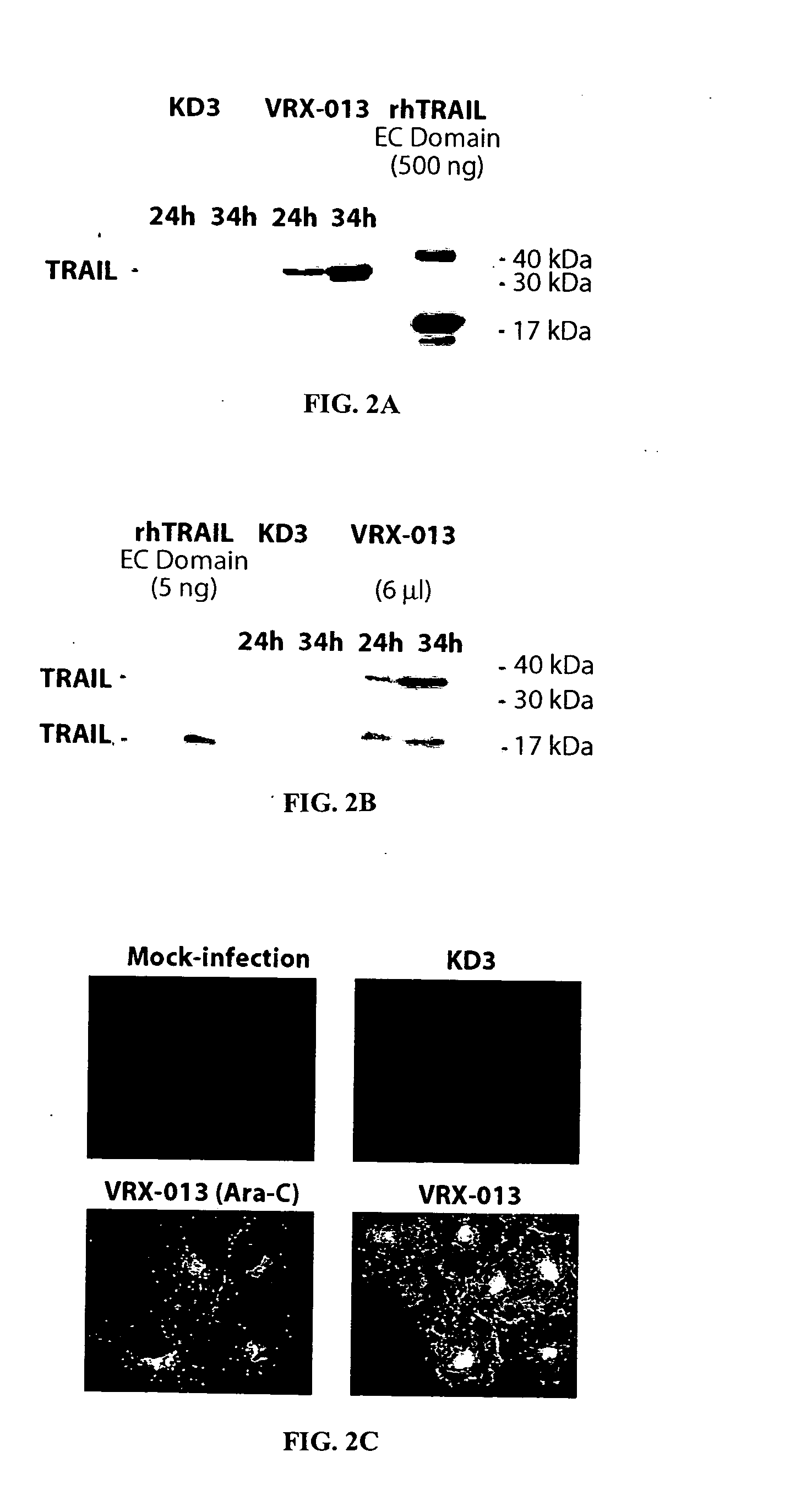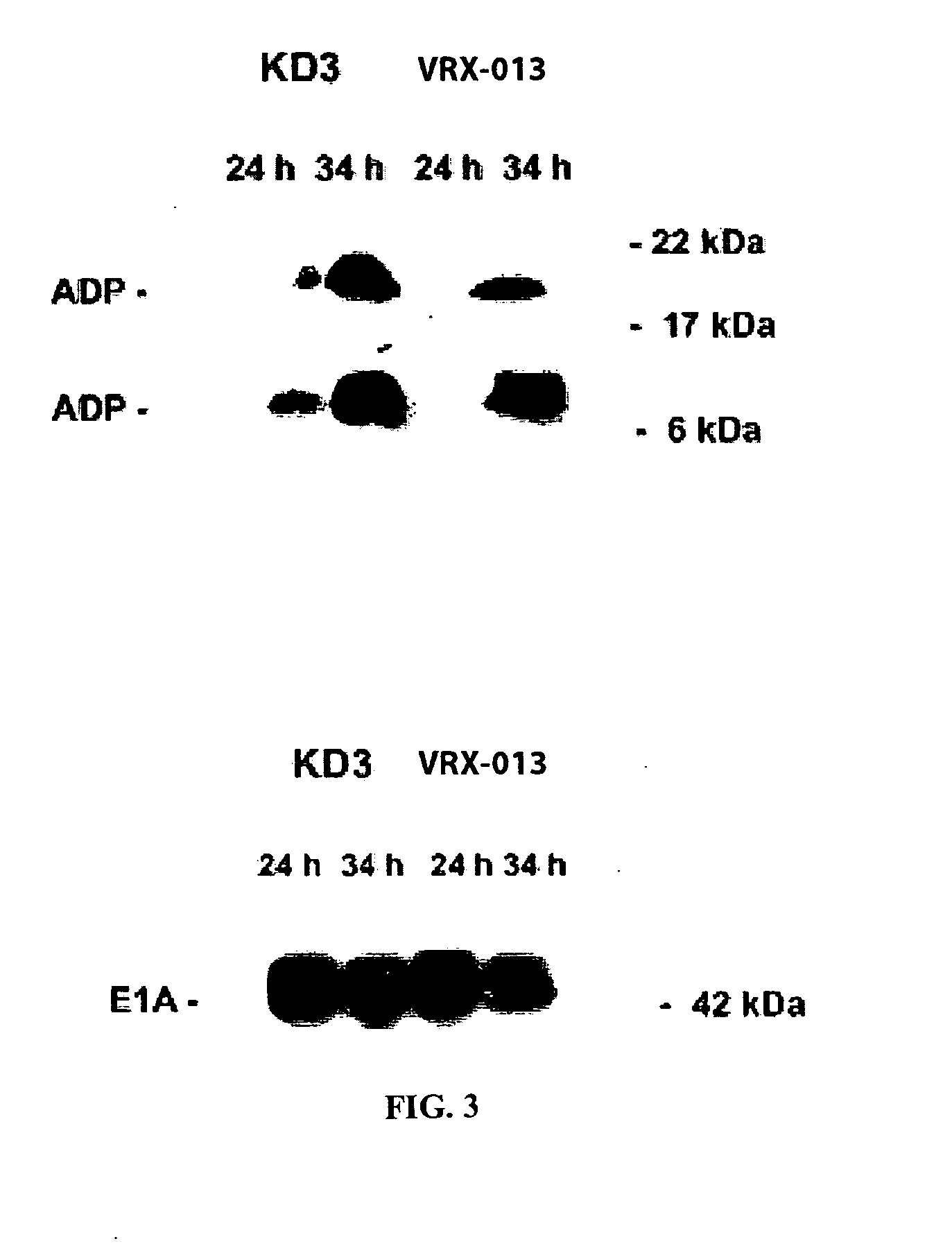Adenovirus replication-competent vectors expressing trail
a technology of vectors and adenoviruses, applied in the field of adenovirus replicationcompetent vectors expressing, can solve the problems of inability to efficiently replicate, inability to apply this approach in human therapy, and often fail treatment, etc., and achieves high levels of trail, high level of trail, and more replication
- Summary
- Abstract
- Description
- Claims
- Application Information
AI Technical Summary
Benefits of technology
Problems solved by technology
Method used
Image
Examples
example 1
Materials and Methods
[0154] Cells. Human cancer cell lines A549 (human lung carcinoma), H441 (papillary lung carcinoma), Hep3B (human hepatocellular carcinoma), HepG2 (human hepatoblastoma), SW1116, LS513, LS174T, SW480 (human colon cancer), DLD-1 (colorectal carcinoma), and LNCaP (prostate cancer), were obtained from the American Type Culture Collection. HeLa (cervical carcinoma) cells were from Eileen White (Rutgers University), and KB cells were from Maurice Green (St. Louis University). HT29.14S cells were obtained from Jeff Browning (Biogen, Cambridge, Mass.). HEK 293 cells were obtained from Microbix (Toronto, Ontario, Canada).
[0155] Considering that TRAIL induces apoptosis, the inventors constructed a cell line that is resistant to TRAIL-induced apoptosis in order to facilitate the development of the TRAIL-expressing Adenovirus vectors. 293 cells were transfected with pCDNA3-CrmA plasmid (kindly provided by David Pickup, Duke University) and were selected with G418 (400 .mu.g...
example 2
Results
[0167] Construction of VRX-013. Plasmid pJW114 was constructed by inserting the full-length copy of the human TRAIL cDNA into the unique XbaI site (position 28592 in Ad5) in plasmid pKD3 (Doronin et al., 2000). The resulting plasmid has three genes in the E3 transcription unit, the Ad5 adp, the Ad5 12.5K, and trail.
[0168] Plasmid pJW114 and EcoRI-SpeI-digested dl1101 / 1107 (Doronin et al., 2000) DNA were cotransfected into 293crmAE3 cells. Following transfection, the complete genome of VRX-013 was formed by overlap recombination of the EcoRI-SpeI-A fragment of dl1101 / 1107 and plasmid pJW114. The scheme of the resulting virus, VRX-013 is shown in FIG. 1A. The 293crmAE3 cell line treated with VRX-013 showed successful results. This result is in contrast to that of another research group which reported the construction of a replication-defective Adenovirus vector expressing TRAIL from a constitutive promoter (Griffith et al., 2000). The result of this study may differ from those ...
PUM
| Property | Measurement | Unit |
|---|---|---|
| Temperature | aaaaa | aaaaa |
| Temperature | aaaaa | aaaaa |
| Time | aaaaa | aaaaa |
Abstract
Description
Claims
Application Information
 Login to View More
Login to View More - R&D
- Intellectual Property
- Life Sciences
- Materials
- Tech Scout
- Unparalleled Data Quality
- Higher Quality Content
- 60% Fewer Hallucinations
Browse by: Latest US Patents, China's latest patents, Technical Efficacy Thesaurus, Application Domain, Technology Topic, Popular Technical Reports.
© 2025 PatSnap. All rights reserved.Legal|Privacy policy|Modern Slavery Act Transparency Statement|Sitemap|About US| Contact US: help@patsnap.com



